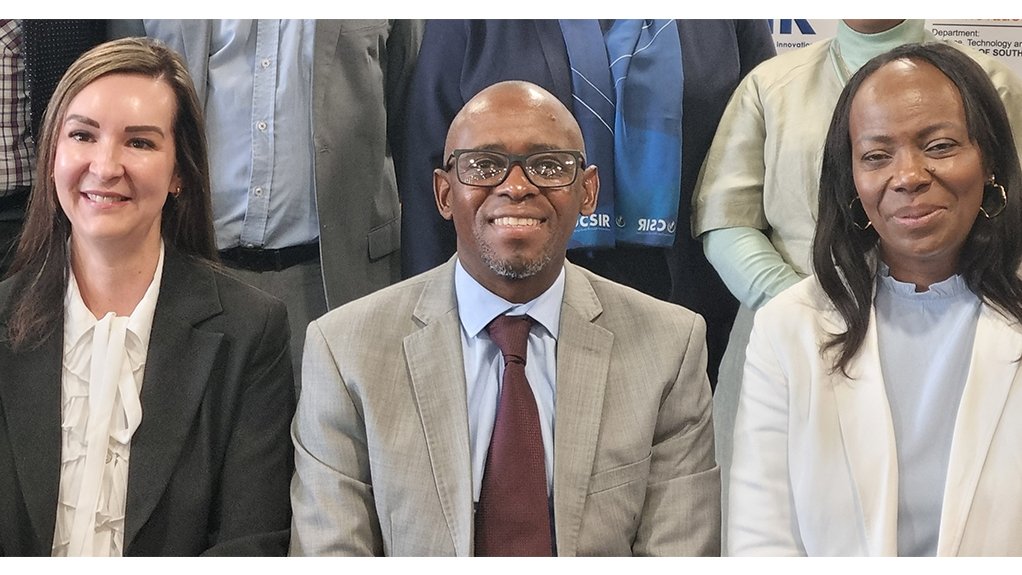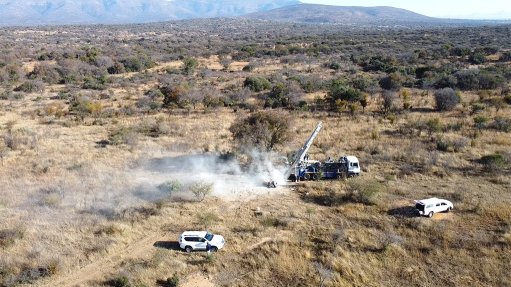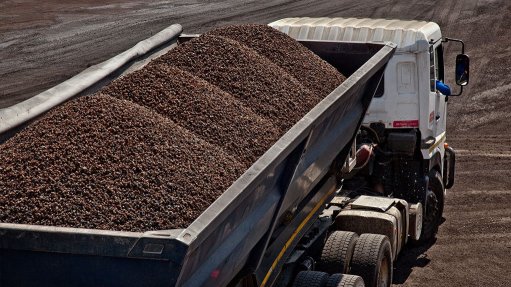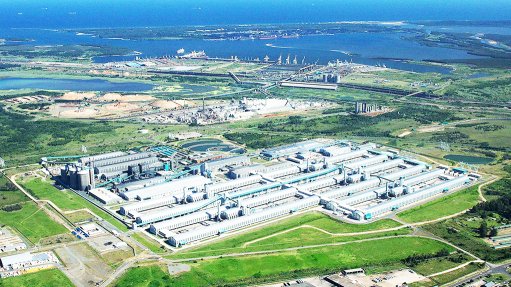CSIR marks eightieth anniversary with exceptional KPI achievement


CSIR CEO Dr Thulani Dlamini unpacks the organisation’s 2024/25 financial performance
As the Council for Scientific and Industrial Research (CSIR) celebrates its eightieth year of existence, the research organisation marks the occasion with a solid set of financial and operational results for the 2024/25 financial year.
It achieved 29 of its 31 key performance indicators (KPIs) for the year – a success rate of 94% – spanning five broad strategic objectives.
In particular, CSIR CEO Dr Thulani Dlamini says an 11% year-on-year increase in localised technologies by the organisation in the year under review highlights the value and relevance of the CSIR to both the State and the private sector.
The localisation of technologies, among other achievements by the CSIR, plays a critical role in addressing South Africa’s developmental challenges such as poverty, unemployment and inequality.
The CSIR has since 1945 pioneered scientific innovations in service of society, government and industry, while continuously evolving to respond to national imperatives and global contexts.
It is one of the few government agencies that successfully generates its own revenue from multiple income sources, with the organisation having recorded an 11% year-on-year increase in net profit to R40.6-million for the 2024/25 financial year.
The organisation’s ability to have grown its total operating income by 11% year-on-year to R3.5-billion and by 14% more than it targeted, is testament to the group’s efforts to maintain financial sustainability.
Local public sector income earned increased by R112-million in the year under review, which comprised 64% of CSIR’s total income, followed by private and international income that increased by 7% and 10% in the reporting year, respectively.
In the year under review, the organisation undertook 22% more projects for government and State-owned enterprises, signed 17% more joint technology development agreements with industry and increased its small-, medium-sized and microenterprise (SMME) support by 3% compared with the prior financial year.
Dlamini says the CSIR’s collaboration with the public sector reached its highest level since 2019, with impactful projects having addressed urban transformation and the green hydrogen economy.
This while the organisation strengthened technology commercialisation through 12 new licence agreements.
The organisation prides itself on having supported SMMEs with advanced technologies in biomanufacturing, aerospace, additive manufacturing and infrastructure development.
Dlamini points out that investments in AI, data analytics, information security, advanced materials and robotics have become essential for building long-term national capabilities and competitiveness.
In respect of the CSIR’s first strategic objective, relating to research and development of transformative technologies, the organisation targeted the release of 298 publications but exceeded this target by 199 – releasing 497 publications in the 2024/25 financial year.
The organisation also outperformed in terms of new patents granted, which amounted to 17, against a target of 12. New technology demonstrators grew to 61 in the year, compared with a target of 49.
A notable achievement under the first strategic objective is that of the CSIR’s compostable packaging that was developed to pilot scale to prevent spoilage of ready-to-eat products and to be easy to manufacture. The compostable packaging is ready for industry uptake as a sustainable alternative to conventional plastics that end up in landfill or pollute the environment.
The CSIR also advanced experimental work on a rugged and modular e-bicycle. This prototyping work forms part of a bigger aim to kickstart South Africa’s electric micromobility value chain. The organisation has signed collaboration agreements with local micromobility businesses to scale the concept.
Under the organisation’s second strategic objective, which relates to industry or private sector support, the CSIR exceeded its targeted number of localisation technologies by 18, having achieved 31 localisations. The organisation also targeted signing 27 joint technology development agreements together with industry but exceeded this target by signing 49 of the agreements.
The council planned to support 97 SMMEs in the year under review, but ultimately provided support to 175 SMMEs, exceeding its yearly target by 78.
Some notable projects in this segment include a fungal-based protein produced in a bioreactor, which offers sustainability and cost advantages over animal and crop-based protein production. The technology was licensed to a South African SMME called Mycosure in the year under review, which is now raising capital to commercialise the technology and establish a first-of-its-kind in Africa manufacturing plant.
Under its third strategic objective, which relates to socioeconomic transformation through research and development that supports the development of a capable State, the CSIR contributed 20 reports to national policy development, against a targeted 14. The organisation also delivered 28 standards in support of the State, against a targeted nine.
Dlamini points out that the council implemented an impressive 224 projects to increase the capability of the State in 2024/25, against a targeted 79, which amounts to a 145 exceedance of the target.
Among its State support projects, the CSIR developed a literacy enablement solution that has been piloted in two schools in Soweto and Mamelodi with 100 learners. The solution uses CSIR text and speech technologies to generate thousands of curriculum-aligned sentences for early primary school learners to engage in their home language and English.
Dlamini says the solution has helped young learners to read, write and comprehend faster than traditional learning methods.
Moreover, the CSIR developed a ground-based surveillance and classification radar that monitors movement across wide areas. The system can be used to detect intruders such as poachers in nature reserves or assisting armed services with border safeguarding.
The radar system has been demonstrated to defence companies during two field tests at the Rietvlei Nature Reserve.
Another important development has been that of a livestock identification and traceability system, which is particularly helpful given the recent outbreaks of foot-and-mouth disease in the country. The system is being used by the Department of Agriculture to control animal diseases, manage livestock movement and prevent stock theft.
The identification and traceability system also supports veterinary oversight and food safety. The system is in its second phase of development which includes enhanced registration and ear tag management modules.
On the home front, under its fourth strategic objective relating to human capital and infrastructure, the CSIR has maintained a high number of total principal researchers, including ones that are black and female. The organisation currently has 21 total chief researchers, of which 29% are black and 24% are female, while it has 202 principal researchers, of which 41% are black and 23% are female.
Notably, the number of staff being involved in exchange programmes with industry has increased to 53 in 2024/25, against a targeted 32.
Moreover, Dlamini highlights that the CSIR is developing a new “FuturePharma” manufacturing facility that can produce small-molecule and biologically active pharmaceutical ingredients, which will help to reduce imports of these ingredients and support SMMEs in the pharmaceutical sector.
In another landmark development, the council has managed to build an ultrasonic atomiser that can produce a range of metal powders used for three-dimensional (3D) printing. The organisation has successfully produced 8 kg of 316L stainless steel powder suitable for 3D printing, which, once scaled, will reduce South Africa’s reliance on imports of high-quality metal powders.
Six Years of Excellence
The CSIR’s strategy, which it has been implementing for the last six years, has included efforts to strengthen SMME support, international partnerships and advanced commercialisation – all towards creating more positive impact and long-term sustainability.
The organisation measures its success by the extent to which it develops technologies and solutions for society, government and industry that yield measurable improvements in service delivery, competitiveness, job creation and transformation.
The challenges to these efforts, however, include decreased public funding, rising operational costs and global uncertainties.
Despite these issues, the CSIR has recorded a 13% rise in publications between 2019/20 and 2024/25, as well as a 50% increase in priority patent applications. Notably, the organisation increased technology demonstrators by 65%, licence agreements by 140% and joint technology agreements by 113% over the period.
The organisation’s contribution to standards development has increased by 180%, while its efforts to support a capable State has increased by a markable 234% over the last six years.
The CSIR achieved a total income increase of 28% over the period, particularly driven by a 175% increase in international income and a 241% increase in ring-fenced grants.
Dlamini says the organisation remains committed to delivering world-class science and technology, as well as contributing meaningfully to South Africa’s industrial and societal transformation.
Article Enquiry
Email Article
Save Article
Feedback
To advertise email advertising@creamermedia.co.za or click here
Press Office
Announcements
What's On
Subscribe to improve your user experience...
Option 1 (equivalent of R125 a month):
Receive a weekly copy of Creamer Media's Engineering News & Mining Weekly magazine
(print copy for those in South Africa and e-magazine for those outside of South Africa)
Receive daily email newsletters
Access to full search results
Access archive of magazine back copies
Access to Projects in Progress
Access to ONE Research Report of your choice in PDF format
Option 2 (equivalent of R375 a month):
All benefits from Option 1
PLUS
Access to Creamer Media's Research Channel Africa for ALL Research Reports, in PDF format, on various industrial and mining sectors
including Electricity; Water; Energy Transition; Hydrogen; Roads, Rail and Ports; Coal; Gold; Platinum; Battery Metals; etc.
Already a subscriber?
Forgotten your password?
Receive weekly copy of Creamer Media's Engineering News & Mining Weekly magazine (print copy for those in South Africa and e-magazine for those outside of South Africa)
➕
Recieve daily email newsletters
➕
Access to full search results
➕
Access archive of magazine back copies
➕
Access to Projects in Progress
➕
Access to ONE Research Report of your choice in PDF format
RESEARCH CHANNEL AFRICA
R4500 (equivalent of R375 a month)
SUBSCRIBEAll benefits from Option 1
➕
Access to Creamer Media's Research Channel Africa for ALL Research Reports on various industrial and mining sectors, in PDF format, including on:
Electricity
➕
Water
➕
Energy Transition
➕
Hydrogen
➕
Roads, Rail and Ports
➕
Coal
➕
Gold
➕
Platinum
➕
Battery Metals
➕
etc.
Receive all benefits from Option 1 or Option 2 delivered to numerous people at your company
➕
Multiple User names and Passwords for simultaneous log-ins
➕
Intranet integration access to all in your organisation




















